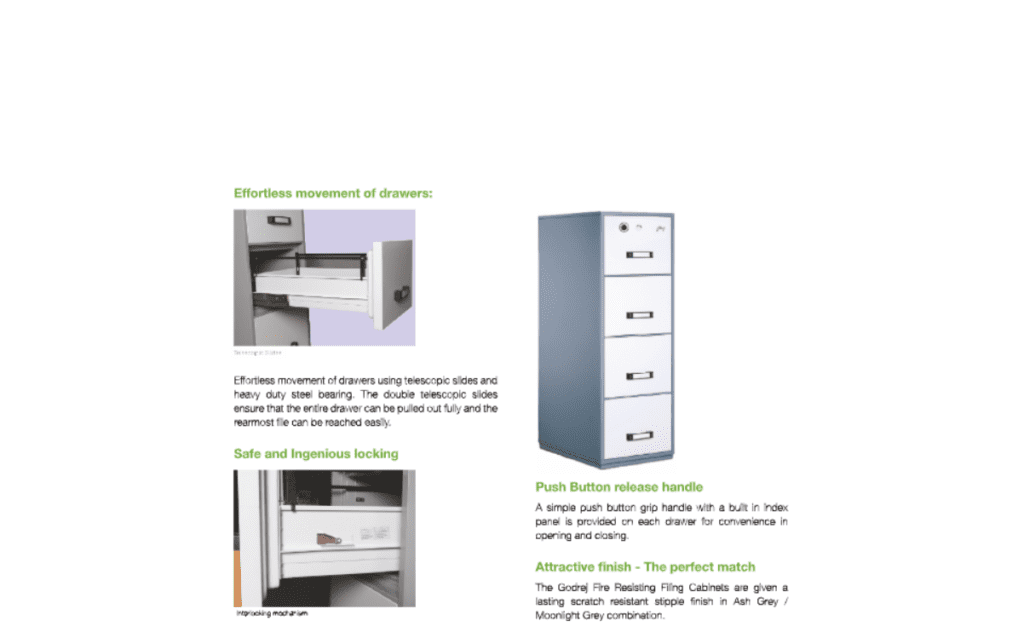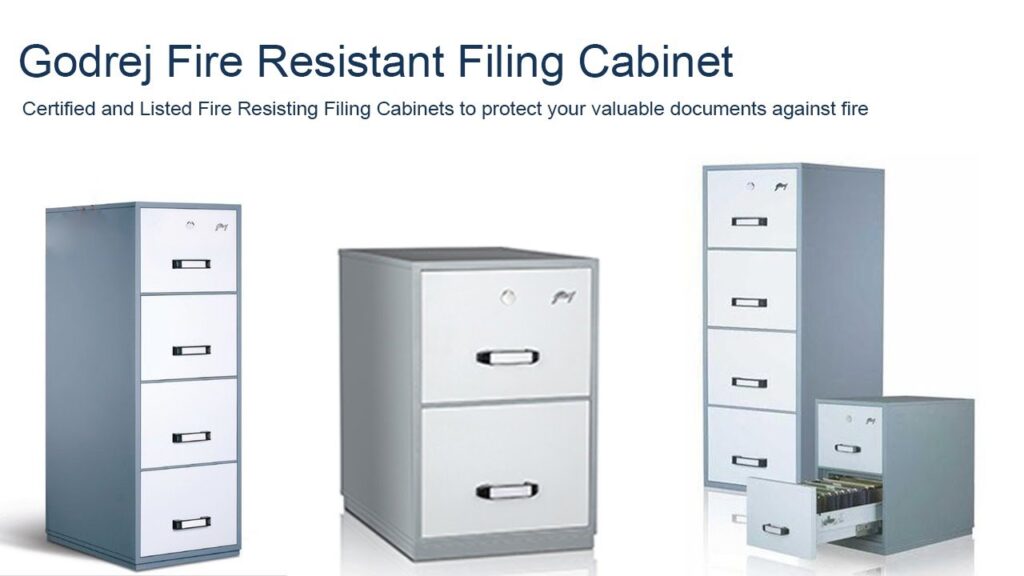A filing cabinet, also known as a file cabinet, is a piece of office furniture used for storing and organizing documents, files, and other important papers. It typically consists of drawers that can be pulled out and pushed in, allowing for easy access to the stored materials.
Filing cabinets are designed to provide a systematic and efficient way to manage and retrieve documents. They are commonly found in offices, businesses, and institutions where a large volume of paperwork needs to be stored securely and accessed easily when needed.
Filing cabinets come in various sizes, styles, and configurations to accommodate different needs. The most common types of filing cabinets include:

Vertical Filing Cabinets: These cabinets have drawers that extend from the shorter side of the cabinet and are arranged vertically. They are commonly used for storing letter-sized documents.

Fireproof Filing Cabinets: These specialized cabinets are designed to protect documents from fire damage. They are constructed with fire-resistant materials and insulation, providing a secure storage solution for important and sensitive documents.

Filing cabinets serve several important purposes in an office environment. Here are some common uses and benefits of filing cabinets:

Document Organization: Filing cabinets provide a systematic and efficient way to organize and store documents. They allow offices to categorize and sort paperwork based on different criteria such as clients, projects, departments, or chronological order. This organization helps in locating and retrieving files quickly when needed.

Document Protection: Filing cabinets provide a secure storage solution for important and sensitive documents. They offer protection from physical damage, such as spills, tears, or creases, as well as unauthorized access or theft. Lockable filing cabinets can help maintain confidentiality and protect sensitive information.

Space Optimization: By storing files vertically or horizontally, filing cabinets help maximize the efficient use of office space. They provide a compact and dedicated area for document storage, reducing clutter and freeing up desk or floor space. This can contribute to a more organized and productive work environment.

Record Retention and Compliance: Filing cabinets facilitate proper record retention and compliance with legal and regulatory requirements. Offices can maintain and manage documents according to specific retention schedules, ensuring that important records are preserved for the required period. This is particularly crucial for industries with compliance obligations, such as healthcare, finance, or legal sectors.

Quick and Easy Access: Filing cabinets enable employees to access necessary files and information promptly. With proper labeling and organization, individuals can locate and retrieve documents without wasting time searching through piles of paper or digital files. This streamlines workflow and enhances productivity.

Collaboration and Information Sharing: Filing cabinets can promote collaboration and information sharing within an office. By providing a centralized repository for documents, teams can easily access shared files, contracts, project materials, or reference materials. This facilitates smoother teamwork and efficient communication.
Historical Documentation: Filing cabinets also serve as a means of preserving historical records and important business documentation. Archived files, past projects, or legal documents can be safely stored for future reference, audits, or historical research.

Filing cabinets are essential tools for document management, organization, and security within an office. They contribute to a well-structured, efficient, and professional working environment by ensuring the availability, confidentiality, and integrity of important records.


